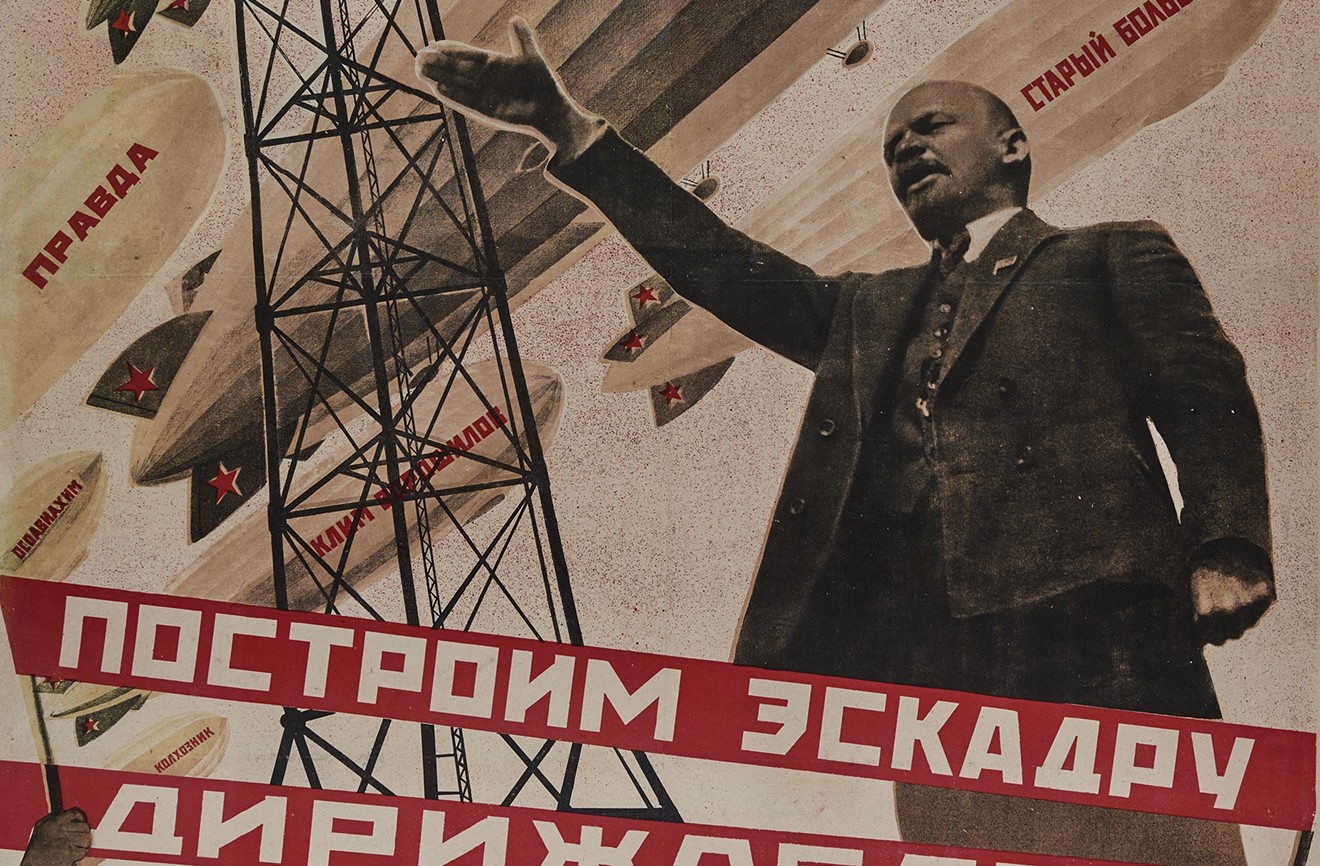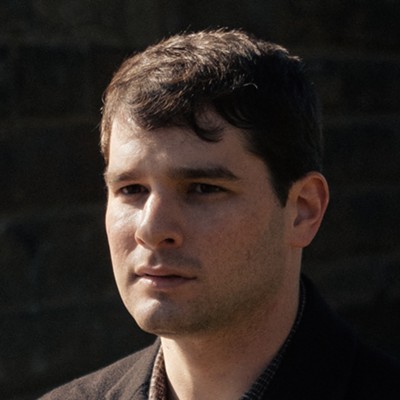For more than a year (though it feels like much, much longer), Americans have been glued to their screens, waiting to learn more about the alleged Russian interference into the 2016 presidential election. Last year, when the hubbub began, another significant event passed with little fanfare, both in the States and in Putin’s Russia: the centennial of the October Revolution, the seismic political shift that turned a massive, cosmopolitan empire into the world’s first Communist nation. This summer, the Wolfsonian, partnering with Bowdoin College Museum of Art in Maine, will belatedly mark the occasion with two concurrent exhibitions, “Constructing Revolution: Soviet Propaganda Posters From Between the World Wars” and "Red and Black: Revolution in Soviet Propaganda Graphics."
But first things first: The organizers aren't trying to brainwash visitors, especially when it comes to current events.
“That connection was not on my mind in the beginning,” Jon Mogul, associate director of curatorial and educational affairs at the Wolfsonian, says of the recent Russia news. “The primary aim for the Wolfsonian is not political, neither promoting nor condemning the political system that’s being shown. We’re trying to focus on presenting the way in which this system used visual culture to get its ideas and ideals across.”
No matter their political standing, Mogul says, viewers will find the art on display to be striking and powerful. The exhibition will begin by focusing on propaganda from the days of the U.S.S.R., when the Bolsheviks used traditional color motifs and satirical illustrations to win the people over during the civil war. It’ll then shift to the late '20s, when Stalin enacted his first five-year plan to rapidly industrialize and collectivize the nation. In this period, avant-garde techniques such as photomontage came into play as poster artists dealt with the transformative shifts around them.
"One of the things that makes the Russian Revolution so interesting is that it was a revolution for the art world as well," Mogul says. "Communism was going to involve tearing down the old society and starting from scratch. Everything would be new. And if you’re an artist, especially if you’re kind of an avant-garde artist... they took it as an invitation not only to continue to experiment in the art world but to apply those experiments to changing the world around them — and getting involved with political propaganda was a way to do that.”
This revolutionary attitude isn’t limited to posters in Russian, of course. The exhibit includes photomagazines and porcelain objects from the era, as well as posters in Yiddish and Georgian. Also, Soviet filmmakers of the time experimented with the moving image in ways that changed the art form. To pay tribute, the Wolfsonian is collaborating with the Miami Beach Cinematheque on a series of four classic film screenings, titled Red in Black + White. The series begins May 6 with the sci-fi epic Aelita: Queen of Mars and continues throughout the summer with Sergei Eisenstein’s Battleship Potemkin June 10 and Dziga Vertov’s Man With a Movie Camera August 12, both of which are still taught in film schools for their revolutionary editing. Nestled between the two on the schedule is Bed and Sofa, a social satire to be shown July 8.
Of course, even if those works come from nearly 100 years ago, it might be difficult to avoid comparisons to today, no matter what the museum intends to say or not say. The Wolfsonian seems prepared for those comparisons, however.
"It's very useful not just to see parallels and similarities between the past and the present, but to be aware of differences,” Mogul says carefully. “It was kind of clear looking at these posters that this was a campaign of persuasion meant to be convincing. It was overt. And I think one of the things that’s disturbing to people about what’s happened in the past year or two is how much of what happened was covert.”
"Constructing Revolution" and "Red and Black." April 13 through August 12 at the Wolfsonian-FIU, 1001 Washington Ave., Miami Beach; 305-531-1001; wolfsonian.org. Tickets cost $12 for adults and $8 for seniors, students, and children aged 6 to 18.
[
{
"name": "Air - MediumRectangle - Inline Content - Mobile Display Size",
"component": "19274298",
"insertPoint": "2",
"requiredCountToDisplay": "2"
},{
"name": "Editor Picks",
"component": "17482312",
"insertPoint": "4",
"requiredCountToDisplay": "1"
},{
"name": "Inline Links",
"component": "18711090",
"insertPoint": "8th",
"startingPoint": 8,
"requiredCountToDisplay": "7",
"maxInsertions": 25
},{
"name": "Air - MediumRectangle - Combo - Inline Content",
"component": "17482310",
"insertPoint": "8th",
"startingPoint": 8,
"requiredCountToDisplay": "7",
"maxInsertions": 25
},{
"name": "Inline Links",
"component": "18711090",
"insertPoint": "8th",
"startingPoint": 12,
"requiredCountToDisplay": "11",
"maxInsertions": 25
},{
"name": "Air - Leaderboard Tower - Combo - Inline Content",
"component": "17482313",
"insertPoint": "8th",
"startingPoint": 12,
"requiredCountToDisplay": "11",
"maxInsertions": 25
}
]













